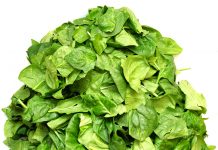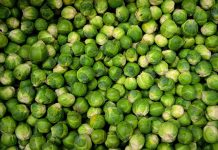
It is true that foods cooked in cast iron skillets are higher in iron. However, the form of iron is not absorbed as well. Laboratory nutrient analysis techniques detect the iron contributed by food cooked in cast iron pans, but the techniques are not able to separate out how much iron is absorbed. Also, absorption varies from individual to individual.
Non-heme iron (ferric) is highly variable in its availability for absorption. Foods high in non-heme iron are grains, vegetables, fruits, eggs and some iron supplements. Absorption of non-heme iron increases in the stomach’s acidic environment and the presence of vitamin C in foods. Also, the present of meat would increase absorption of non-heme iron four times. However, oxalates and phytates found in dark green leafy vegetables and whole cereal grains decrease the absorption of iron because they bind with iron in the gastrointestinal tract.
Heme iron (ferrous), found in red muscle meats of animals, is far more effectively absorbed. The absorption of heme iron is influenced by other foods in the diet such as foods containing vitamin C and an acid environment like the stomach.
In contrast, cast iron pans degrade vitamin C. Another consideration is that the amount of hydrochloric acid, which would also favor better iron absorption, decreases with aging.
I would not recommend you depend on cast iron skillets for a significant amount of iron in your diet.
If you feel the need to take an iron supplement, take a ferrous sulfate supplement. I would recommend that persons avoiding red meat or any vegetarian take an iron supplement to prevent iron deficiency anemia.


